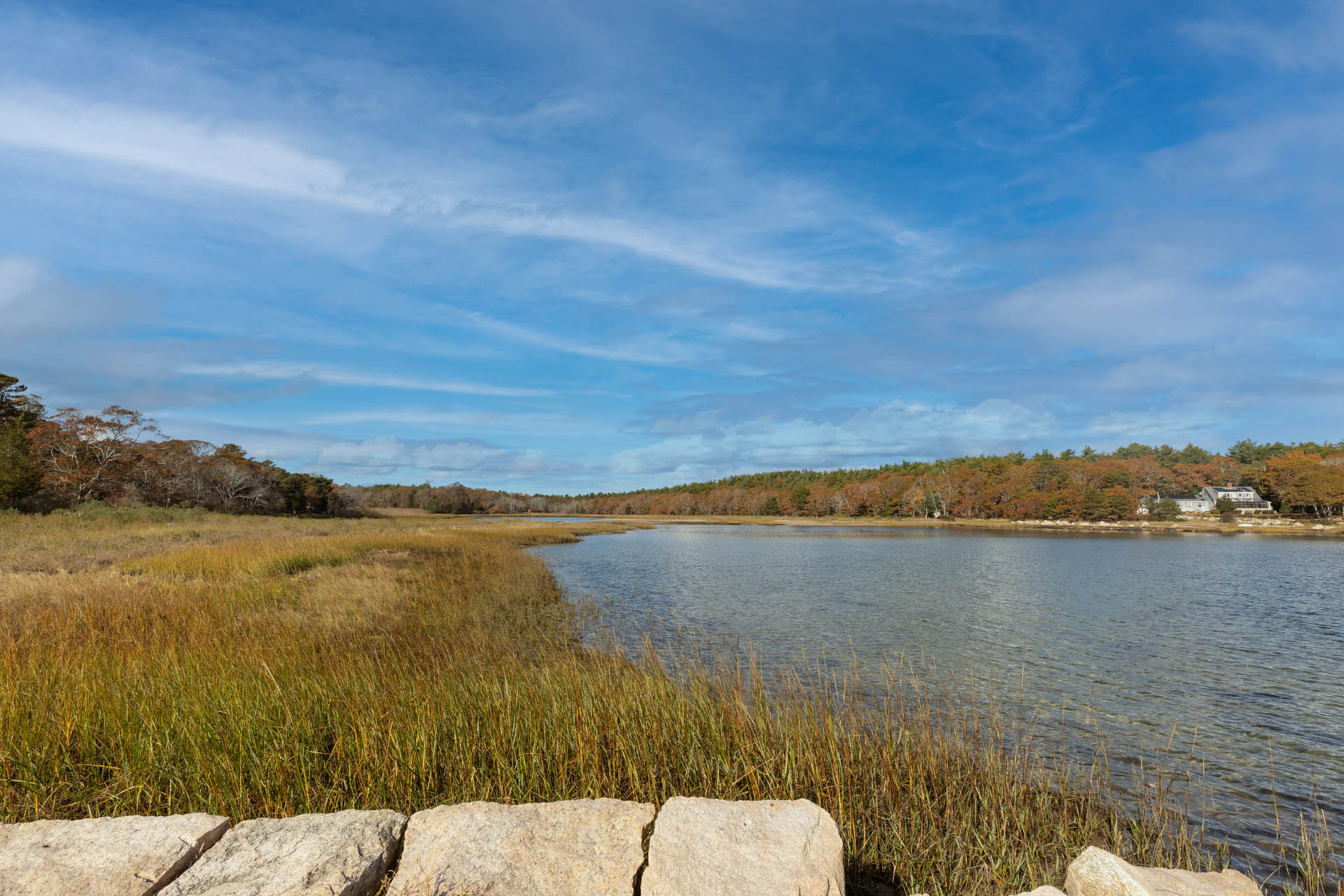110-Acre Expansion Opens to Public
May 22, 2021
After a few COVID-related setbacks, all sections of Great Neck Wildlife Sanctuary finally re-opened to visitors in May 2021—including the expanded area that encompasses the former Sacred Hearts property!
Our hardworking staff and volunteers spent more than a year getting the new 110-acre expansion ready for the public. Preparations included installing new interpretive signage, building the trails, and strengthening existing infrastructure in several places.
We're thrilled to welcome you back to our improved network of trails! Try the Old Pasture Loop, which will bring you through a pine forest and along old stone walls. Or head out on Heron Point Loop, which leads to the Osprey Overlook and offers a view of the Cape Cod Canal and salt marsh habitat.
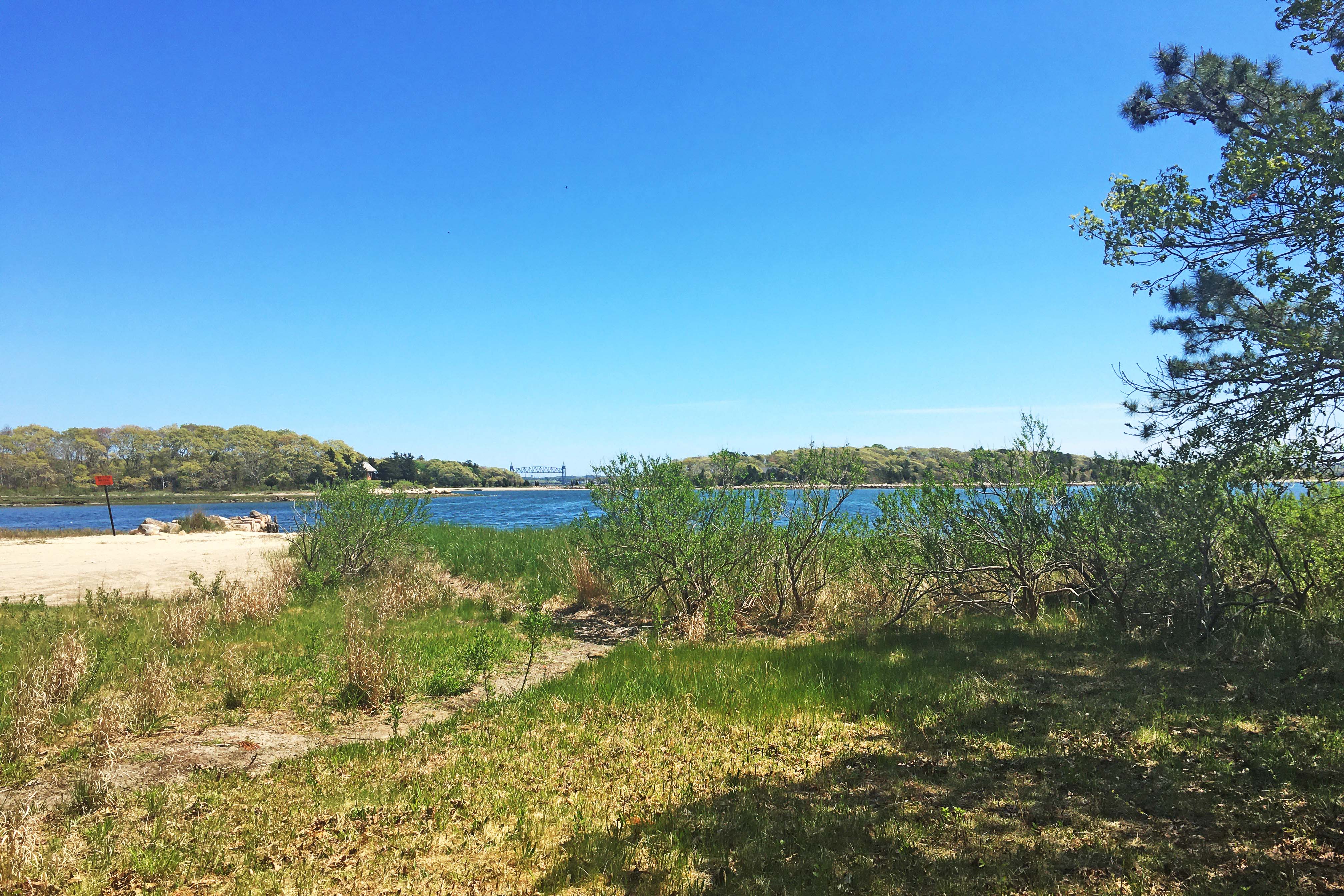
Improvements for Visitors
Throughout 2020, Mass Audubon staff and volunteers worked hard to restore and enhance wildlife habitat at Great Neck and make necessary modifications to increase visitor safety.
Dedicated volunteers worked in small groups to assist our property staff with maintaining the sanctuary grounds, improving trail systems, and helping with additional preparations for the re-opening.
Our sincere gratitude goes out to everyone who contributed time, sweat, and elbow grease to this massive undertaking! Your efforts are already starting to pay off for sanctuary staff and visitors.
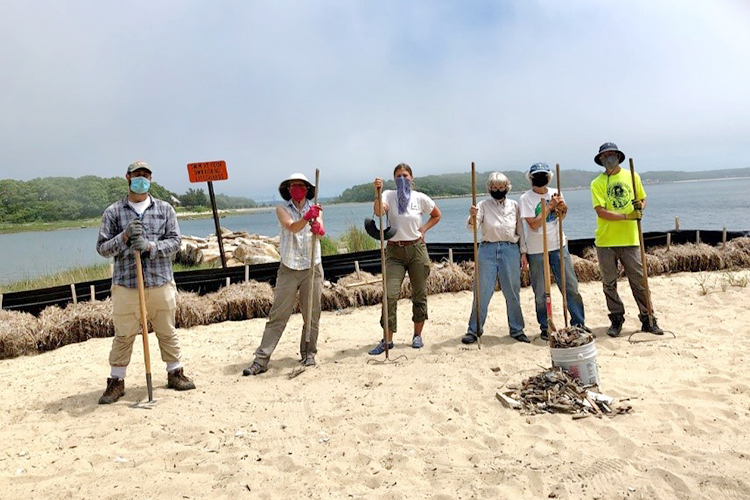
Restoring Habitat
In spring 2020, five of the seven buildings that once stood on the former Sacred Hearts property were removed. To better support local bird and pollinator populations, the area was re-planted with native grasses, wildflowers, and over 120 shrubs and trees.
None of it would have been possible without the help of our amazing community and local families! One instance involved a group of Wareham elementary school teachers who took part in a 10-week educational series at the sanctuary. The work culminated in a volunteer day at Great Neck where the students were joined by parents and teachers. In just one day, they planted 60 native shrubs on this formerly asphalt-covered site!
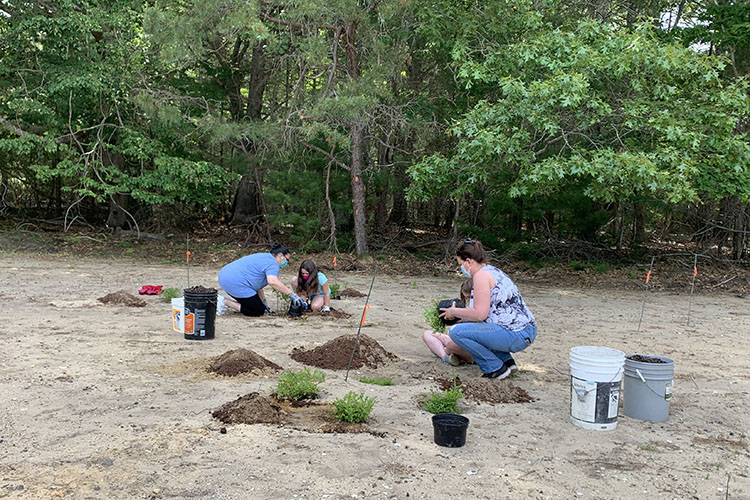
The native wildlife have already noticed the improvements. During a public birding program at the sanctuary in fall 2020, participants were happy to see Belted Kingfishers, Pine Siskins, Red-breasted Nuthatches, Cedar Waxwings, Common Loons, Buffleheads, Common Eiders, and a whole lot more. It was a wonderful reminder of why conserving bio-diverse land like Great Neck is so important.
Enhancing Climate Resiliency
Along with prepping the former Sacred Hearts property for opening, we also prepared the sanctuary as whole to endure the future effects of climate change.
In partnership with Mass Audubon's Conservation Science department, our Shaping Climate Resilient Communities program, and several other local conservation organizations* both Allens Pond and Great Neck were awarded a watershed grant from the EPA's Southeast New England Program (SNEP).
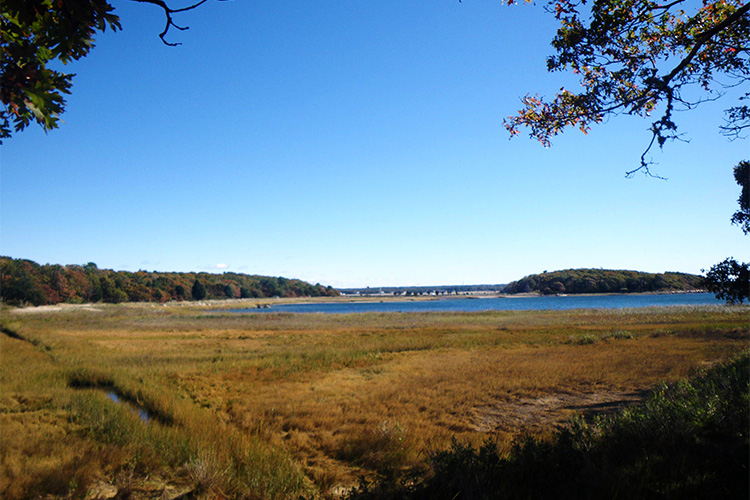
The SNEP funding is being used to make these two South East sanctuaries more robust and adaptable in the face of climate change while also improving our understanding of how rising ocean waters and more frequent storms impact saltmarshes. These vital transition ecosystems serve as flood control, nursery habitat for fish, critical stopover locations for migratory birds, and are extremely efficient in removing carbon dioxide from the atmosphere.
Sea level rise threatens to inundate saltmarshes and degrade them and their vital functions. Mass Audubon is working to mitigate this threat by helping these ecosystems "migrate" inland. To facilitate this movement, we're removing obstacles that would impede the establishment of saltmarsh vegetation—including an old squash court—as well as improving coastal upland habitat through native plantings and removal of invasive species.
*Save The Bay, Town of Wareham, Wareham Land Trust, Dartmouth Natural Resource Trust
Stay Connected
Don't miss a beat on all the ways you can get outdoors, celebrate nature, and get involved.



